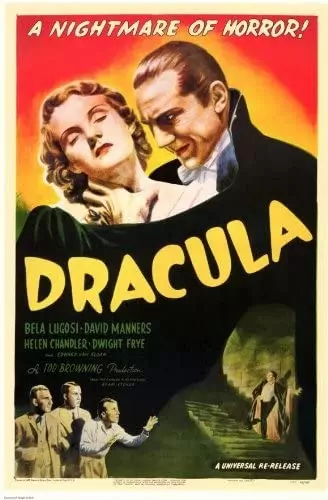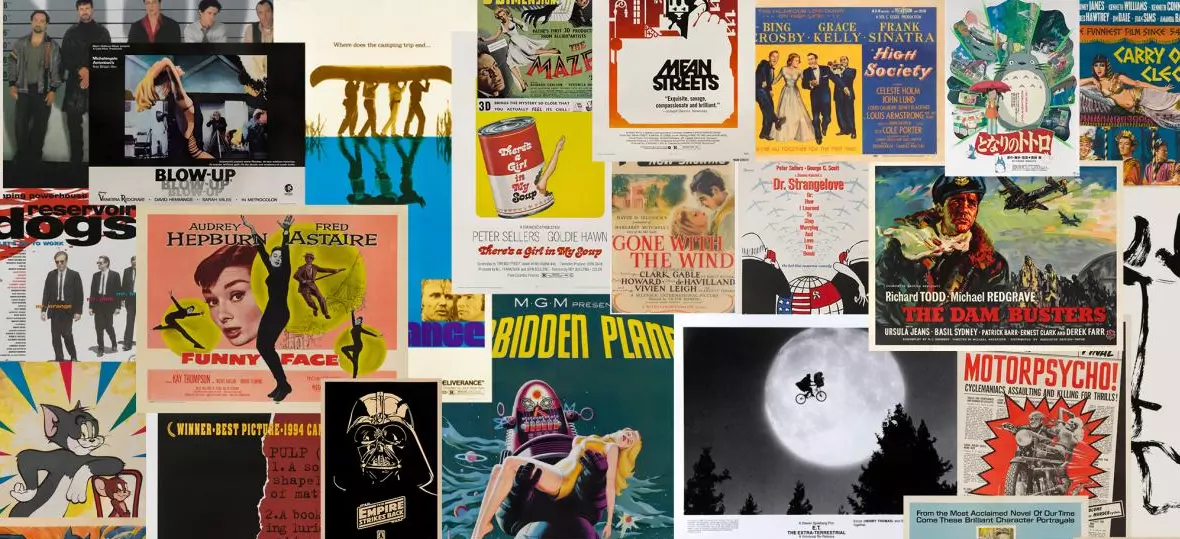Are vintage movie posters valuable? Find out how to authenticate old movie posters and how to determine the value of a movie poster.
What Are Vintage Movie Posters Worth?
Originally, movie posters were highly colourful promotional pieces that were displayed in order to convince viewers to spend their hard-earned money on going to see this new film. Lobby cards and posters were printed to be used specifically in cinemas.
The early posters were only produced in highly limited quantities, and they were only made for the purposes of marketing. Over the last fifty years or so, these posters have become highly sought-after collectable works of art.
Of course, cinemas, promoters and production studios have continued to use posters for promoting films as it has become an incredibly viable form of marketing. However, these days the production and circulation of modern posters has become greatly expanded and thus reducing their value to collectors.
The subject matter is one of the most important elements of a poster for a collector, with the condition being a close second. Paper art is highly fragile in nature, and this means that it degrades slowly over time if it is not protected in a professional manner.
Due to this, very few original posters are in mint condition. Many old posters have folds, wear on the edges or surface, pinholes, faded colours and other faults.
The most important step in properly identifying the worth of a movie poster is taking a look at the paper. Modern posters, as well as reissues and reproductions, will commonly be printed on glossy stock, which can easily be identified.
Some older reproductions and reissues were printed on flat stock so that they look visually more closely to the originals. The most glaring feature that can be identified in order to spot older reproductions amongst the originals is the size of the paper.
Reissues and reproductions were commonly edited into a standard size for extended printing runs, usually in the dimensions of twenty-four inches by thirty-six inches
Original posters had completely different dimensions, and posters and promotional materials were usually in the dimensions of twenty-seven inches by forty-one inches or larger.
In many cases though, the subject matter of the poster is what truly drives the price up, and the condition of the paper can easily be forgiven.
If you can believe it, there are some vintage movie posters that have been in auctions and have reached top prices that are well into the six figures.
In November 2017, what has come to be known as the "holy grail" of vintage film posters was sold in an auction. The poster for the original 1921 Dracula film was sold for over $500,000. A huge amount.
The poster is, without a doubt, the rarest and most desirable in its own genre, perhaps even in the entire hobby of vintage poster collecting. The poster was found in the early nineties, and to this day, the lithograph poster is still the only "style-A" version of this poster that has ever been sold in an auction.

In the world of vintage poster collecting, horror and science fiction films are by far the most popular genres. In reality, the actual films don't need to be particularly good at all. It's all about having a striking image on the poster. A well-designed monster is enough to make a vintage poster skyrocket in price. The otherworldly and sometimes frightening images that can be found on these posters are enough to take fans back to when they were young, and the first time they ever saw a horror film.
If you aren't a fan of horror movie posters yourself, then there are plenty of other options that you can choose from. Some examples would be comedies, westerns, musicals, and more. Some of the most desirable posters to be collected are the ones produced by Disney.
Even collectors who aren't fans of Disney are desperate to get their hands on the poster for "The Mad Doctor". This is a film where everyone's favourite, Mickey Mouse, has to save his good friend Pluto from an evil doctor's mansion. At some stage of the film, friendly old Mickey is strapped down to a chair and is threatened at knife point. Certainly not your usual kind of Disney film. This is why the poster for the film has become such a collector's item among enthusiasts. In 2009, a poster for The Mad Doctor sold for $138,000.
How do I Authenticate My Posters?
When you are seeking out the value of a poster, the first and arguably important step of them all is to ensure that the poster is actually authentic. You need to find out whether when the time the poster was released makes it original, a reproduction, or a reissue.Copyright information, texture, and paper size can all be used in order to determine the age of the majority of film posters.
Several of the earliest vintage film posters produced before the year 1940 had copyright information and studio logos printed but did not contain any sort of date. After 1940, the National Screen Service started to distribute the majority of film posters across America, and this was when the posters began to be dated and coded at the bottom of the poster.

In the 1960s and 1970s, there were several different companies, with the most notable being Portal Publications, which began to reproduce a number of different vintage movie posters. There are some handy ways that you can spot a reproduction amongst the originals.
First, as mentioned earlier, is the size. Reproductions were made to the size of twenty-four inches to thirty-six inches, which was not a size ever actually by any film studio for displaying and advertising their movies.
The standard poster size that was used by film studios was always twenty-seven inches by forty-one inches
Secondly, you look at the bottom of the poster; you will see a clearly printed mark that says "copyright Portal Publications". It may have the original date of the film's release, but this does not mean that the poster is an original.
These posters were not printed on a flat stock like the originals were, and this means that they will often appear "used" or "old". Don't fall for this facade, though; these posters are reproductions and far from originals. For collectors, these posters are essentially worthless.
Re-releases and reissues are still original posters, in a way. They were used in cinemas for promoting films, but they have a far lower value than the originals. The best way to spot a reissue is by taking a look at the bottom right-hand corner of the print. There will usually be an R in front of the year that the film was produced, such as "R61".
The R means that the poster is a reissue or reproduction. There are also some key phrases that might pop up on the poster, such as "Back By Popular Demand!", "Nothing Cut But the Prices", or "An Encore Hit". When it comes to newer posters from the 1990s onwards, all posters were produced on glossy stock. Original, reproduction, or otherwise. This means that posters for major modern films have been bootlegged in the thousands and thousands. This makes it extremely hard to be able to determine the authenticity of these posters.
If you are really struggling with being able to tell whether a poster you own is an original or a reproduction, then you should visit an expert or a professional. They will be able to give you a complete run-through on what makes your poster valuable or not-so-valuable, and the majority of experts will even do this for completely free.
Original Vintage Movie Posters for Sale
We created this website to provide a vintage movie poster guide. If you have an interest in classic movie posters from the 1950s, 1960s or 1980s, we hope you will learn more about the most popular posters of the period.
Take a sneak peak at some of the posters we have in stock here. However, if you have a film in mind and don't see it here, please get in touch as we'd be happy to locate it for you.
Are you interested in movie poster collecting? We hope you have gained useful information from this article discussing: Are vintage movie posters valuable? Follow the links below to discover more about collectable movie posters.

